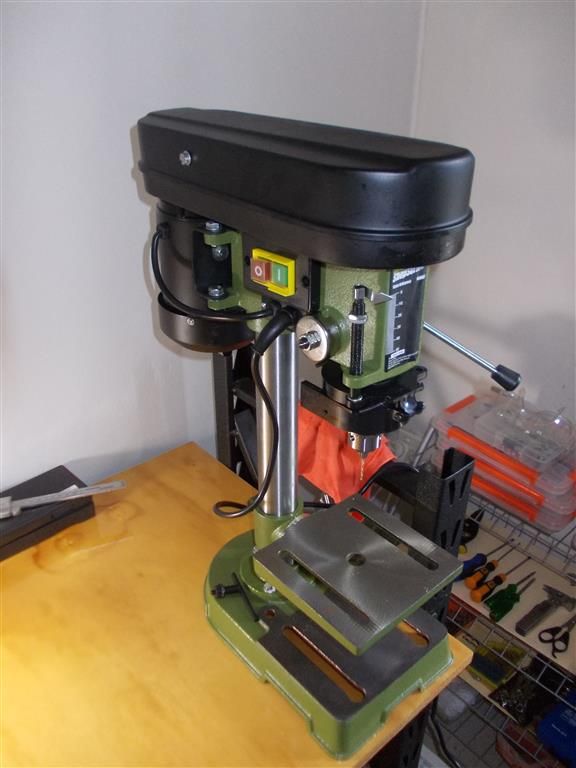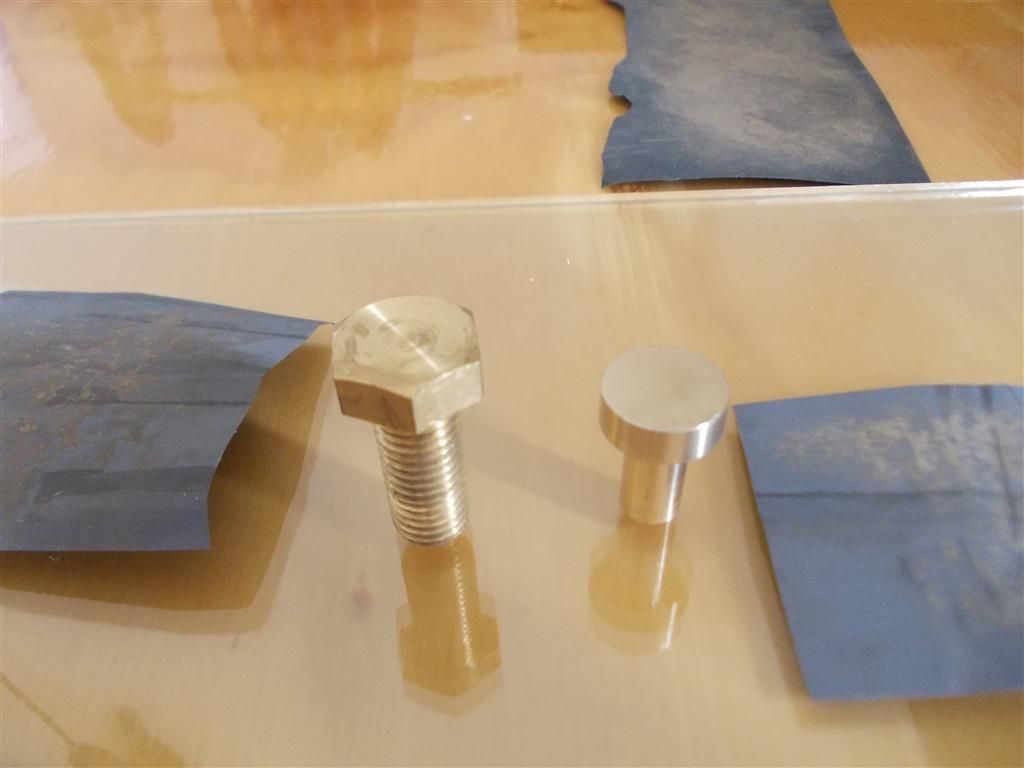Beside the upside down blade and running in reverse, try drilling a centre hole in the end of the job and keep the tailstock centre in place until you get down to the last little bit before the cut is finished.
I wouldn't worry too much about wobble at the end of the stroke of your drill press. What's important is the wobble in the first inch or so of movement. This is the area you will use for 90 per cent of model work. You can also drill and tap the drill housing for a couple of brass grub screws, or even slit it with a hacksaw and install a pinch bolt, but you already have one machine tool that needs fettling…
If you bought the drill press from supercheap or Bunnings, I think both will let your return it for a refund if it is "not fit for purpose". It might be worth looking at the Kinchrome drill presses at Allied Bearings but I'd expect they're more expensive at $179 at the moment. They all look the same, made from the same castings but machined and assembled by different companies. Kincrome at least has some kind of quality control checks before they put their name on it. Most of their stuff is reasonable quality, not Snap-On or Stahlwille quality but good enough for home use.
Your best shot for making future 'wax chucks" might be some ally bar a bit larger than the diameter of your crank disc, then turn a recess in the face to match the disc diameter and glue the disc in the recess with super glue or Loctite. Or, even more economical on material, and making parting easier for yourself, turn the outside diameter of the brass crank disc to size then drill and ream the hole down the middle. Then part it off. Then take a piece of scrap bar, eg 16mm, and turn a short section down to fit neatly in the reamed hole. Put the disc on the newly turned spigot and superglue/Loctite it in place.
Edited By Hopper on 20/10/2015 10:00:56
Gordon Tarling.







 It is the Rockwell brand. I think I will hang onto it now. As Hopper said, most drilling is done at the top of the throw. I have been to Bunnings today and the Ryobi drill press looks much better quality but it does cost $229.
It is the Rockwell brand. I think I will hang onto it now. As Hopper said, most drilling is done at the top of the throw. I have been to Bunnings today and the Ryobi drill press looks much better quality but it does cost $229.

